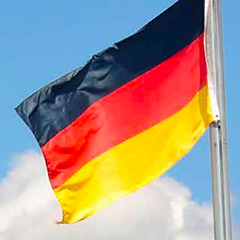The impressive success so far of the German Energiewende (energy turnaround) is vital to the wider PV industry in that the country is cloudy, high-latitude, heavily industrialised and highly competitive. Nevertheless, there are doubters who are quick to point out when it falters – a short-sighted move, given the undisputable facts…
While the examples of Japan, China, and India show the promise of rapidly emerging energy economies built on efficiency and renewables, Germany – the world’s number four economy and Europe’s number one – has lately provided an impressive model of what a well-organised industrial society can achieve.
To be sure, it’s not yet the world champion among countries with limited hydroelectricity: Denmark passed 40% renewable electricity in 2011 en route to a target of 100% by 2050, and Portugal, albeit with more hydropower, raised its renewable electricity fraction from 17% to 45% just during 2005 -10 (while the U.S., though backed by a legacy of big hydro, crawled from 9% to 10%), reaching 70% in the rainy and windy first quarter of 2013. But these economies are not industrial giants like Germany, which remains the best disproof of claims that highly industrialised countries, let alone cold and cloudy ones, can do little with renewables.
Germany has doubled the renewable share of its total electricity consumption in the past six years to 23% in 2012. It forecasts nearly a redoubling by 2025, well ahead of the 50% target for 2030, and closing in on official goals of 65% in 2040 and 80% in 2050. Some areas are moving faster: in 2010, four German states were 43-52% wind-powered for the whole year. And at times in spring 2012, half of all German electricity was renewable, nearing Spain’s 61% record set in April 2012.
To underscore the remarkable German case, let’s review what happened in 2011, right after Fukushima. The Bundestag – led by the most conservative and pro-nuclear party, with no party dissenting – overwhelmingly voted to close eight of the country’s nuclear plants immediately and the other nine by 2022. (In a double U-turn, a nuclear phase-out agreed in 2000 was first slowed and then reinstated; nuclear output has actually been falling since 2006.)
Sceptics said this abrupt shutdown of 41% of nuclear output would make the lights go out, the economy crash, carbon emissions and electricity prices soar, and Germany need to import nuclear power from France. But none of that happened.
In fact, in 2011 the German economy grew three percent and remained Europe’s strongest, buoyed by a world-class renewables industry with 382,000 jobs (about 222,000 of them added since 2004, with net employment and net stimulus both positive). Chancellor Merkel won her bet that it would be smarter to spend energy money on German engineers, manufacturers, and installers than to send it to the Russian natural gas behemoth Gazprom. Germany’s lights stayed on. The nuclear shutdown was entirely displaced by year-end, three-fifths due to renewable growth.
Do the maths: simply repeating 2011’s renewable installations for three additional years, through 2014, would thus displace Germany’s entire pre-Fukushima nuclear output.



























